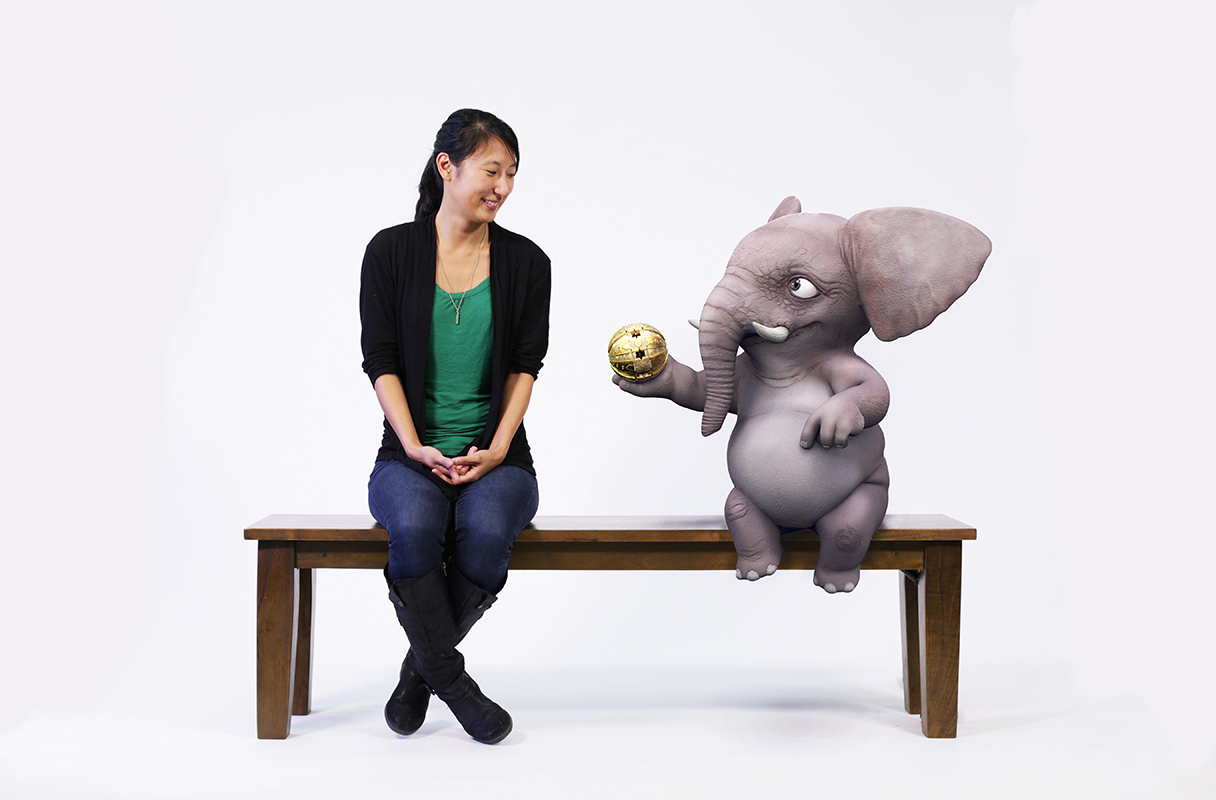Disney's 'Magic Bench' Puts You in the Picture with Animated Figures

A new "Magic Bench" designed by Disney Research lets you interact with endearing animated characters — and no special glasses or headsets are required.
Instead, the complete environment — the seat, the sitter and the cartoon humanoid animals — is mirrored on a screen opposite the bench, making it possible for others to watch the scene unfold.
How does the illusion work? A camera and sensor capture images and gather depth information about physical objects — the bench and the person — that algorithms integrate with the 3D animations, the researchers wrote in a study. Meanwhile, haptic sensors built into the bench deliver vibrations that are synchronized to animated actions on the screen, creating the illusion that the animated figures are occupying real-world space next to the user. [10 Technologies That Will Transform Your Life]
"Our mantra for this project was: hear a character coming, see them enter the space, and feel them sit next to you," Moshe Mahler, principal digital artist at Disney Research, said in a statement.
Augmented-reality overlays animated elements into views of the real world, typically by using special optical devices or mobile technology. However, one of its limitations is that its illusion can be glimpsed by only a single user. The Magic Bench allows groups of people to gather in a single environment and collectively participate in an augmented- reality experience, all at the same time, according to the study authors.
Sitting on the bench triggers the augmented-reality experience, introducing a character into the scene. In a video demonstration, a small cartoon donkey trots into view and kicks the bench, generating a sharp sound and making the seated person jump in surprise. Another test shows two people on the bench, reacting as they "feel" an animated rabbit leap up beside them and jump up and down. When a user passes his hand over the rabbit, a shadow moves across its head — as though it were occupying the same physical space as the person next to it.
Researchers used the real-color camera and the depth and color sensors in a Microsoft Kinect to capture the real-world scene of the Magic Bench and the person (or people) on it. Rebuilding them in 3D places the bench between a foreground and background, which can then be populated with whimsical characters. But the Disney engineers discovered that if the reconstructed 3D scene were viewed at an angle, missing data and a small difference in alignment between the camera and sensor created gaps in the image known as "depth shadows."
Sign up for the Live Science daily newsletter now
Get the world’s most fascinating discoveries delivered straight to your inbox.
To eliminate these depth shadows, designers layered another element into the scene — a 2D background captured by the Kinect's RGB camera, which seamlessly aligned with the scene when viewed head-on, the study authors wrote. Once the "stage" is set, it's ready to be shared with animated co-stars — from elephants offering up a glowing orb to a giraffe lending an umbrella during a sudden drizzle.
Disney Research technicians presented the Magic Bench at SIGGRAPH 2017, an annual conference and exhibition on computer graphics and interactive techniques, that was held in Los Angeles from July 30 to Aug. 3.
Original article on Live Science.

Mindy Weisberger is an editor at Scholastic and a former Live Science channel editor and senior writer. She has reported on general science, covering climate change, paleontology, biology and space. Mindy studied film at Columbia University; prior to Live Science she produced, wrote and directed media for the American Museum of Natural History in New York City. Her videos about dinosaurs, astrophysics, biodiversity and evolution appear in museums and science centers worldwide, earning awards such as the CINE Golden Eagle and the Communicator Award of Excellence. Her writing has also appeared in Scientific American, The Washington Post and How It Works Magazine. Her book "Rise of the Zombie Bugs: The Surprising Science of Parasitic Mind Control" will be published in spring 2025 by Johns Hopkins University Press.











